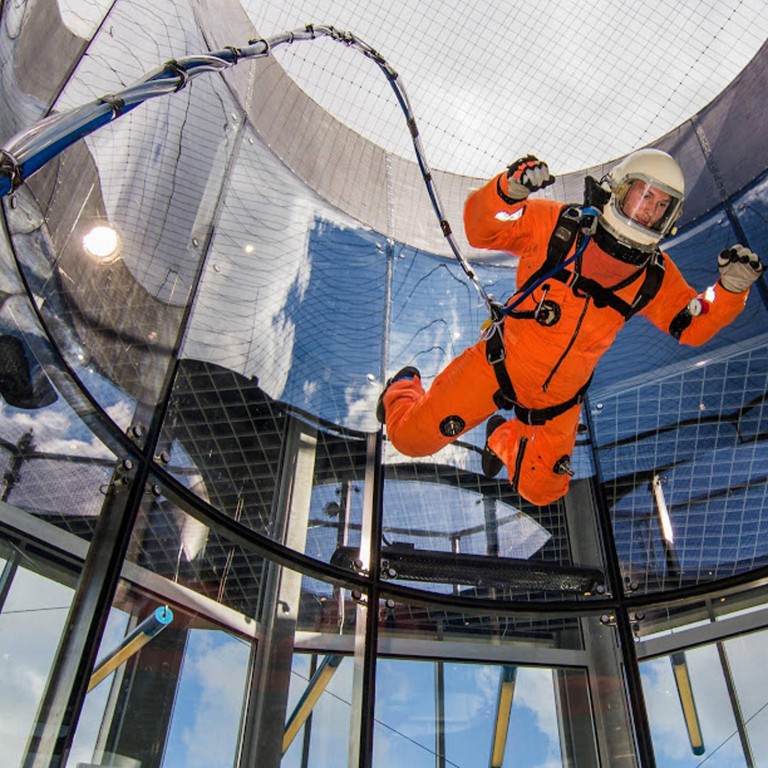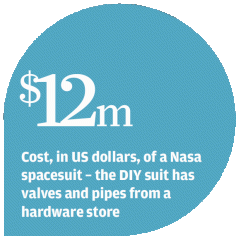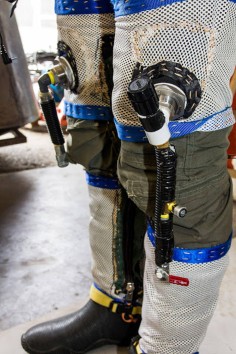
Countdown gets closer for Danish amateurs' first budget space flight
Danish amateurs pursue dream of reaching the heavens on a shoestring, with astronaut in a DIY suit and heat shield using cork from carpet shop
Duct tape, cork tiles, plastic valves from the local hardware shop and a DIY spacesuit are just some of the items strewn around the old submarine berth in Copenhagen's dockyards.

What you may not picture is a bunch of amateurs tinkering with an eight-tonne rocket that may one day launch a man into space.
Peter Madsen was aged 10 when he watched the Space Shuttle Columbia's first flight on television in 1981.
"I remember being fascinated by the white plumes of steam and the shockwaves of the hydrogen fuel," recalled Madsen. "From then on, I was hooked."
This was a problem for a boy living in Roskilde, Denmark. "There isn't exactly a Cape Canaveral here, so I got into amateur submarines instead - they're a lot like rockets in many ways," he said.
Madsen hit the headlines for building a 40-tonne sub with friends for just £125,000 (HK$1.5 million) in 2008. "I did a newspaper interview and the journalist asked what I was doing next, so I said I wanted to build a rocket. As soon as the article came out, this guy e-mailed, saying he could help," Madsen said.
Aerospace scientist Kristian von Bengtson, also from Copenhagen, was working on the US space agency Nasa's Constellation programme, but had become disillusioned by the notion of space as big business.

He said: "It was more bureaucratic and political than I'd expected and when a new president came into power, projects got scrapped. I knew of Peter's work, so when I read he wanted to go into space, I got in touch."
The pair met and within 10 minutes had sketched out a plan for a rocket they thought they could build on a shoestring.
"We wanted to put a human in space in a new way and without lots of money - to be in the workshop every day, instead of in meetings with banks," explained Madsen. The non-profit Copenhagen Suborbitals was born.
"We started work straight away in a submarine hangar and ran a test flight two years later," said Madsen. Since then, they have notched up successes with the most powerful amateur rocket ever flown and the first amateur rocket launch with a full-size crash test dummy in it.

In the last month, Bengtson and Madsen passed another big milestone - creating a DIY spacesuit for a volunteer astronaut to wear on the first flight.
With a Nasa-style spacesuit costing about US$12 million, Copenhagen Suborbitals needed to create something safe and durable on a fraction of the budget.
This is achieved by following the Copenhagen Suborbitals philosophy of using simple solutions for complex problems.
"The DIY spacesuit is made with valves and pipes from the hardware shop," said Bengtson.
"We use a lot of stuff you can buy in supermarkets or shops." He used cork from a carpet shop as a heat shield in the rocket.
The Suborbitals were also thrifty when it came to testing the astronaut's capacity for g-forces.
"We didn't have the money to hire Nasa's facilities so we went to Copenhagen's Tivoli Gardens and tested the g-forces on fairground rides instead," said Bengtson. "The Vertigo ride has exactly the same g-force as our rockets, so we hired it for a day."
As a father-of-two, it has been agreed that Bengtson will sit out the first manned rocket flight.
Madsen, who will wear the DIY spacesuit on the maiden voyage, said: "It's such a buzz every day, even before I get into space. The flight will be something else."
